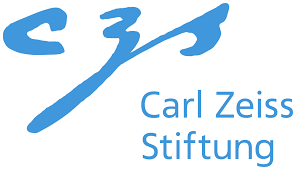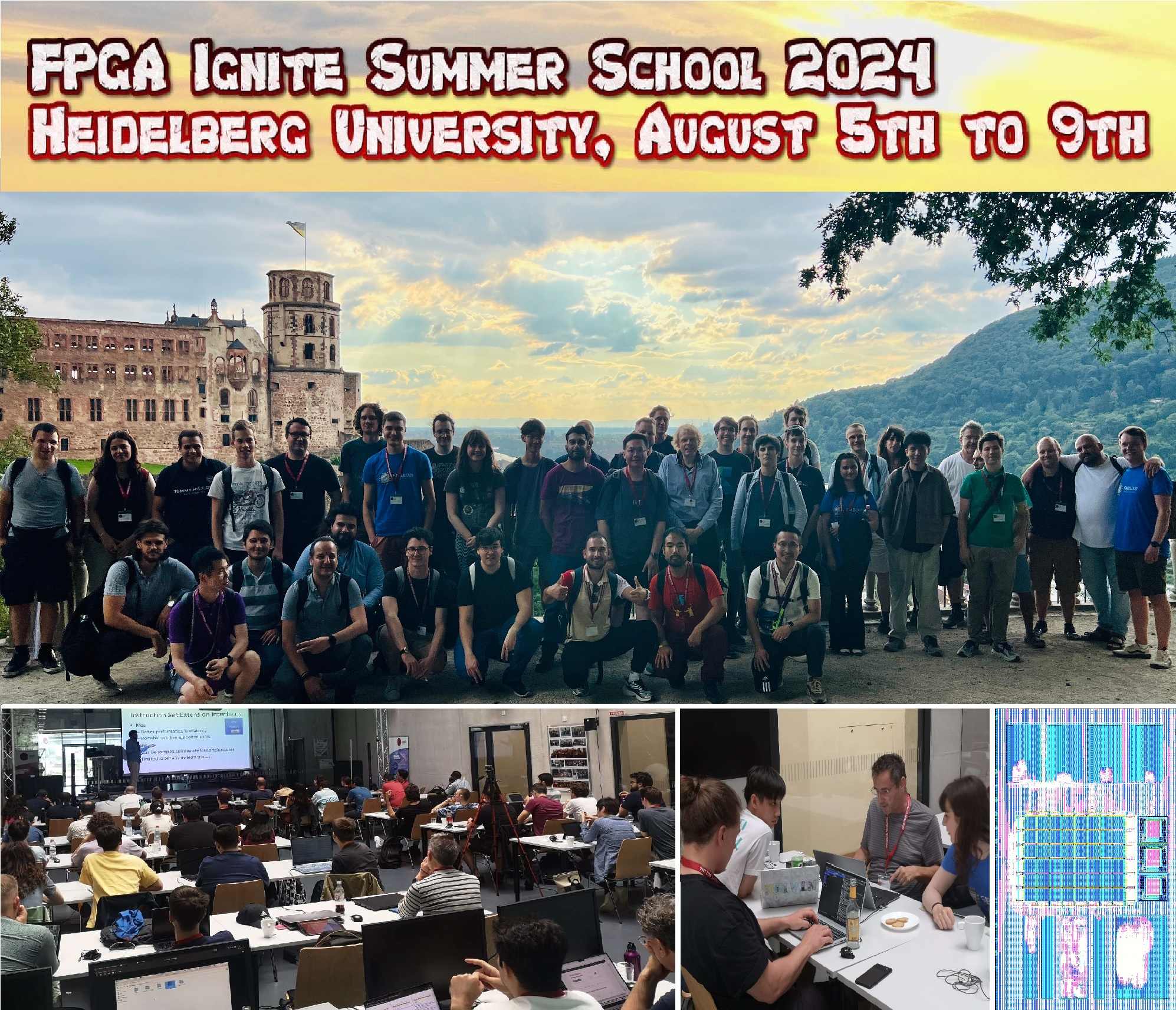| Poster Number |
Poster Authors |
Affiliation |
Title |
Abstract |
PDF |
| 1 |
Chao Qian and Professor Gregor Schiele |
University of Duisburg-Essen, Germany |
Energy-Efficient Deep Learning Accelerators with Workload Awareness for Embedded FPGAs |
My poster is about my PhD dissertation, which focuses on developing an energy-efficient deep learning accelerator on embedded FPGAs. Central to my work is the hypothesis that integrating efficient inference with workload awareness is essential for optimizing energy efficiency in embedded systems. Workload awareness guides the selection of FPGA models, optimization techniques during accelerator design, and adaptation of FPGA behavior during idle periods. |
PDF |
| 2 |
Meinhard Kissich and Marcel Baunach |
Graz University of Technology, Austria |
FazyRV - A Scalable RISC-V Core |
FazyRV is an inherently scalable RISC-V RV32I core for control-oriented applications and the IoT. It aims to minimize the area demand while fulfilling performance requirements and to close the gap between prevalent 32-bit and 1-bit-serial RISC-V cores. Thus, the data path can be synthesized to a width of either 1, 2, 4, or 8 bits to process smaller ``chunks'' of the operands in each clock cycle. |
PDF |
| 3 |
Czea Sie Chuah |
DENSO Automotive Deutschland GmbH, Technical University of Munich |
Pre-Silicon Formal Verification and Post-Silicon Assertion Checker on RISC-V Processor |
Due to high security demands of upcoming applications, several famous bugs and security-vulnerabilities in processors have been found in the past years, and openness of RISC-V Instruction Set Architecture, we are researching methods to improve and harden hardware security. We identify and formally verify security-critical properties on a RISC-V processor for pre-silicon verification and subsequently adapt and optimize those properties to be converted into synthesizable for fabrication along with design for post-silicon verification. |
PDF |
| 4 |
Dr. Hossam O. Ahmed |
American University of the Middle East (AUM) |
|
This project presents novel True Random Number Generator (TRNG) modules implemented on various Intel FPGA chips. The verified output throughput ranges from 300 Mbps to 2.4 Gbps. These TRNG modules comply with both the US NIST SP 800-90B standard and the BSI AIS-31 PTG.2 standard, ensuring high-quality secure random number generation. |
PDF (Online) |
| 5 |
Hugh Squires-Parkin |
Newcastle University |
Active Autonomy Drone Module |
An autonomous drone module as part of an undergraduate project. It used an FPGA onboard as an accelerator, but it is mostly about the mmWave radar and is dated midway through the project. |
Onsite |
| 6 |
Tim Fernandez-Hart, Dr James Knight, Prof. Tatiana Kalganova |
Brunel University London |
|
This study compares a new arithmetic system - posits - against the established Floating-Point (FP) when training Spiking Neural Networks (SNNs) using only 8-bits. To emulate a future, reduced precision SNN training accelerator, we quantise not just network parameters, but also the gradients, loss, accumulators, momentum and the neuron state variable membrane voltage at every stage of the training process. We not only show that posits are able to do this out-of-the-box, where FP fails, but we also show why this is the case. |
Onsite |
| 7 |
Zheyu Liu, Christos Kotselidis |
Advanced Processor Technology Research Group, Department of Computer Science, University of Manchester |
Graph Neural Networks Acceleration with Adaptive Dataflow Architectures & FPGA |
FPGA and reconfigurable dataflow architectures (RDAs) provide superior solutions for accelerating machine learning at various granularities. By leveraging heterogeneous reconfigurability, higher computational capabilities and energy efficiency can be achieved in complex graph tasks. |
PDF |
| 8 |
Jan Zielasko(1,2), Rune Krauss(1), Rolf Drechsler |
- Institute of Computer Science, University of Bremen, Germany
- Cyber-Physical Systems, DFKI GmbH, Germany
|
|
RISC-V Opt-VP: An Application Analysis Platform Using Bounded Execution Trees. RISC-V Opt-VP is a Virtual Prototype driven binary analysis platform.
By analyzing the execution, it identifies instruction sequences that are promising candidates for application specific hardware optimization.
The poster gives an overview of the tool and presents our current and planned future work. |
PDF |
| 9 |
Georgios Mentzos, Prof. Jörg Henkel |
Karlsruhe Institute of Technology |
Approximate Tiny Machine Learning on Lightweight FPGAs |
The proliferation of tiny devices performing complex machine learning tasks has necessitated the development of new acceleration methods that meet strict energy and latency requirements, while maintaining acceptable accuracy. TinyML has emerged as the perfect candidate for bringing computations closer to the edge allowing secure, private and near-instant responses. The inherently error-resilient nature of ML tasks forms a perfect match with Approximate Computing, enabling performance optimizations across the stack. At the same time, the flexible and efficient FPGA architecture is an excellent candidate to exploit the benefits of Approximate Computing potentially offering significant optimization opportunities for lightweight embedded FPGAs. |
PDF |
| 10 |
Morteza Rezaalipour(1), Marco Biasion(1), Cristian Tirelli(1), Mohammad Atwi(1), Cristian Tirelli(1), Lorenzo Ferretti(2), Rodrigo Otoni(1), Professor. George A. Constantinides(3), Laura Pozzi(1) |
- Università della Svizzera italiana, Switzerland
- Micron Technology, US
- Imperial College London
|
Approximate Logic Synthesis via Iterative SMT-based Subcircuit Rewriting and Through a Prametrizable FPGA or ASIC Template |
Approximate Logic Synthesis via Iterative SMT-based Subcircuit Rewriting and Through a Prametrizable FPGA or ASIC Template |
PDF |
| 11 |
M. Andjelkovic, J. Chen, R. T. Syed, F. Vargas, M. Ulbricht |
IHP – Leibniz-Institut für innovative Mikroelektronik, Im Technologie Park 25, Frankfurt (Oder), Germany |
Resilient Processing Platform for 6G Mobile Networks |
Resilient Processing Platform for 6G Mobile Networks |
PDF |
| 12 |
Bea Healy and Tobias Grosser |
University of Cambridge |
|
Arcilator is an open-source hardware simulator in the CIRCT project built around the Arc Dialect, a multi-level intermediate representation that gradually lowers designs from hardware to software. The first level in this representation refines designs into a flattened graph of state elements (a generalization of registers) and the pure combinational transform arcs between them. This poster will discuss (a purely hypothetical idea for) how this structure could be used to accelerate simulation on processors with reconfigurable instruction extensions by outsourcing the most expensive transform arcs to dedicated instructions. |
Onsite |
| 13 |
Farhad EbrahimiAzandaryani and Dietmar Fey |
Friedrich-Alexander-Universität Erlangen-Nürnberg |
Boosting Computations in RISC-V Cores with CSD-Encoded Operands |
Performance bottlenecks, particularly those associated with the binary representation carry chain problem, hinder RISC-V cores’ efficiency. In our research, we are working on a synthesizable design method that integrates ternary encoding into the μ-architecture of a RISC-V processor to address the computations bottleneck. |
Onsite |
| 14 |
Manuel Jirsak, Adrian Pitterling, Jonas Lienke, Georg Gläser |
IMMS Institut für Mikroelektronik- und Mechatronik-Systeme gemeinnützige GmbH (IMMS GmbH) |
To Clock or not to Clock: Clock Gate Insertion with a Yosys-based Netlist Modification Tool |
Conventional tools automatically insert clock gates during the synthesis process, but often rely on heuristics for the identification of insertion points and control signals.
We present a more aggressive approach for hierarchically gating the clock of all FFs. This allows for better power reduction or on-demand clocking at the expense of higher area overhead.
Using the open-source synthesis tool Yosys, we translate the circuit into a generic JSON netlist, insert the clock gates, and convert back to Verilog. |
PDF |
| 15 |
Qaisar Farooq |
|
Efficiency and Performance Tradeoffs in FPGA
based Embedded Computer Vision Applications |
|
PDF |
| 16 |
Tarik Ibrahimović, Chili.CHIPS*ba, doc. dr. Nedim Osmić |
Chili.CHIPS*ba, Faculty of Electrical Engineering, Department of Automatic Control and Electronics, University of Sarajevo |
eduBOS5: RISC-V uContriller Dev Experience: From Combo to Pipelined, optimising PPA metrics for FPGA |
This poster highlights the architecture and features of a RISC-V micro-controller of configurable pipeline length, custom-tailored for FPGAs. The poster demonstrates development process, thinking and motivation that led to gradual transition from combo to pipelined design, optimizing Performance/Power/Area (PPA) metrics. The key takeaway is its impressive throughput for the miniscule physical footprint. |
PDF |
| 17 |
Justin Cott |
|
Silicon Implementation of a
RISC-V Processor for the AstroPix Multi-Channel Readout Controller |
|
PDF |
| 18 |
Filip Brkic und Ruediger Willenberg |
Mannheim University of Applied Sciences, Germany |
It's a Bug, not a Feature: Pitfalls of initialized BlockRAM use in soft
processor systems |
Dedicated RAM blocks on configured FPGAs are already initialized when
booting on-chip embedded systems. This potential benefit can lead to
software malfunction if used improperly.
We identify how problematic design choices in the AMD/Xilinx toolflow
for the Microblaze soft processor can lead to corruption of initial
program state. We suggest fixes to prevent this flawed behaviour.
Furthermore, we survey other FPGA vendors' soft processor toolchains to
probe for similar problems. |
Onsite |
| 19 |
Al-Harith Farhad, Fatos Gashi |
|
Embedded AI Optimization Approaches and Best Practices |
|
PDF |
| 20 |
Vijay Srinivas Tida (1), Thomas VanDenEinde (1), Sai Venkatesh Chilukoti (2), Md. Imran Hossen (2), Liqun Shan (2), Sonya Hsu (2) and Xiali Hei (2) |
- (College of St. Benedict and St. John's University
- University of Louisiana at Lafayette
|
Implementation of Kernel Segregated Transpose Convolution Operation |
Transpose convolution has shown prominence in many deep-learning applications. However, transpose convolution layers are computationally intensive due to the increased feature map size, which is due to adding zeros after each element in each row and column. Thus, convolution operation on the expanded input feature map leads to poor utilization of hardware resources. The main reason for unnecessary multiplication operations is zeros at predefined positions in the input feature map. Thus, we propose a kernel-segregated transpose convolution mechanism to overcome this problem. The implementation of the proposed method shows substantial savings in area and power consumption with reduced delay in the computation process. In the future, we will implement the transpose convolution layer using Xilinx Artix-7 and Intel Agilex-7 FPGA boards. |
PDF (Online) |















